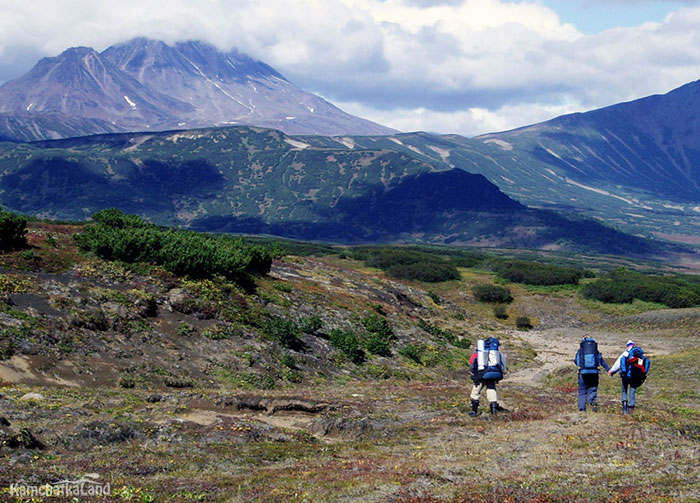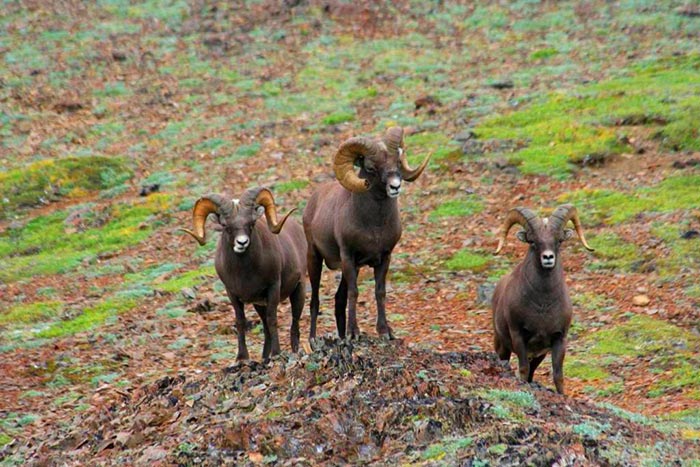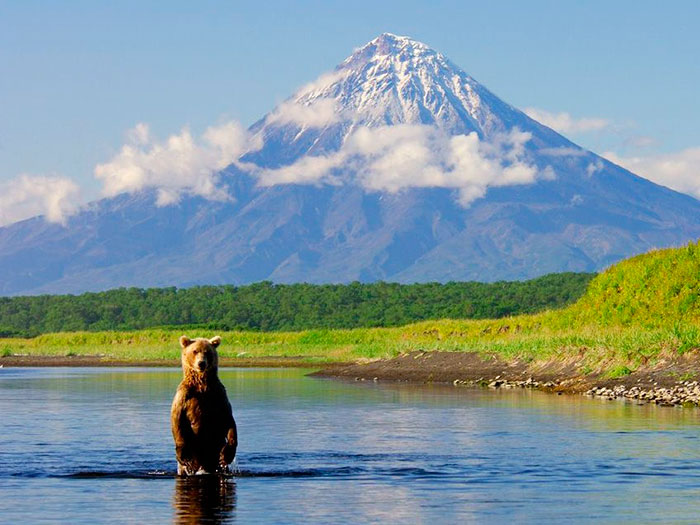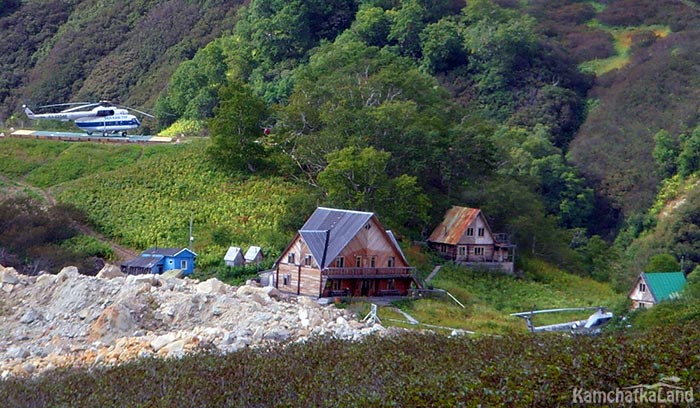Nature's Paradisaical Landscape
"We need to protect not only Kamchatka, but nature in Russia in general."
"If we start moving the boundaries, in the future we will start looking for reasons to move more."
Roman Korchigin, deputy director, ecotourism, education, Kronotsky Reserve

The chain of volcanoes circling the Pacific Ocean is named the "Ring of Fire", with the Kamchatka Peninsula located directly over the tectonic forces that gave birth to those volcanoes, thirty of which remain active of the over 300 that are known to exist. Of that total of three hundred, four to seven of them annually erupt. The volcanoes of Kamchatka has been designated a world heritage site reflecting their beauty, and variety, an exceptional landscape that nature has forged, according to UNESCO.
 |
Salmon race upstream in late summer, turning the Kamchatka's rivers red with their numbers. All six species of wild Pacific salmon return to spawn there, the only place on earth where this happens. Its forests are home to an estimated 20,000 brown bears. Overhead, giant Stellar's eagles soar, while orcas cavort and Kamchatka's king crabs grow to immense size offshore.
There is an appearance of tropical lushness in the brief window of the disappearing snows in May and the first snowfalls that arrive in mid-September. The foothills are covered with pale purple tundra while bright green forests beckon, and above, the volcanoes loom in shades of grey and pale reds, dotted with snow and glaciers. The region's alpine meadows are alight with colourful flowers and fields of wild grass reach over three meters in height.
 |
In times long past, it would take a full year on leaving Moscow to reach the peninsula and its spectacular geology. Swampland separates the peninsula from mainland Russia, with no paved roads at present to traverse that gap. Despite which it is no longer as isolated as it once was, and in that lack of isolation thee is tension between developing natural resources and preserving the natural presence of a world heritage site.
Kamchatka's pristine nature draws visitors to view and wonder at a landscape so varied, wild and beautiful. There are outdoor activities that beckon those who love nature, from hiking, fishing, rafting, surfing and mountain climbing, while winter offers helicopter skiing and a dog race of a month's duration. There is, in Kamchatka 600 kilometres of paved roads concentrated for the most part around its three cities to the south where 80 percent of its population of 315,000 people live.
As a peak of over 2,300 meters, the Mutnovsky volcano appeals popularly to tourists. Petropavlovsk-Kamchatsky, the capital, is about 60 kilometers from the volcano; a four-hour drive on dirt roads accesses the volcano from the city, traversing across boulder-strewn lava fields. Nine-meter poles are placed at regular intervals along the edge of the ascending road to the volcano, measuring the height of winter snow.
 |
The base layer of the Kamchatka peninsula's natural wonders are represented by the volcanoes as the backbone of the landscape. Volcanic lakes and thermal springs dot the peerless landscape. The mountain chain attracts wind-driven clouds from Siberia or off the Pacific, stalling over their piercing summits, to drop huge snowfalls and rain depending on the season, to feed the numerous lakes and rivers and streams in the region.
Conservationists view the stunning natural beauty from a perspective all their own, that of conservation. The number of visitors that Kamchatka attracts is troubling to them, with major fishing enterprises and tourism groups having purchased exclusive rights to estuary fishing grounds or even entire rivers, policing their areas of investment. Now, a Russian tycoon has plans to build a tourist village in the landscape, as an "eco-park" to offer summer and winter sports.
 |
Viewing paths are also in prospective plans as boardwalks close to the Mutnovsky volcano, along with two others, Gorely and Vlyuchinsky volcanoes. Accommodation for an estimated annual 400,000 visitors representing two to three times the current number of tourists is envisioned, with a proposal for a 1,000-room accommodation. The project's investors envision owning the land for their hotel and tourism enterprise, which would entail a departure from its current status as a locally protected nature preserve. A move that conservationist organizations determine represents a dangerous precedent.
 |
Labels: Eco-Tourism, Environment, Kamchatka Peninsula, Nature, Russia

0 Comments:
Post a Comment
<< Home